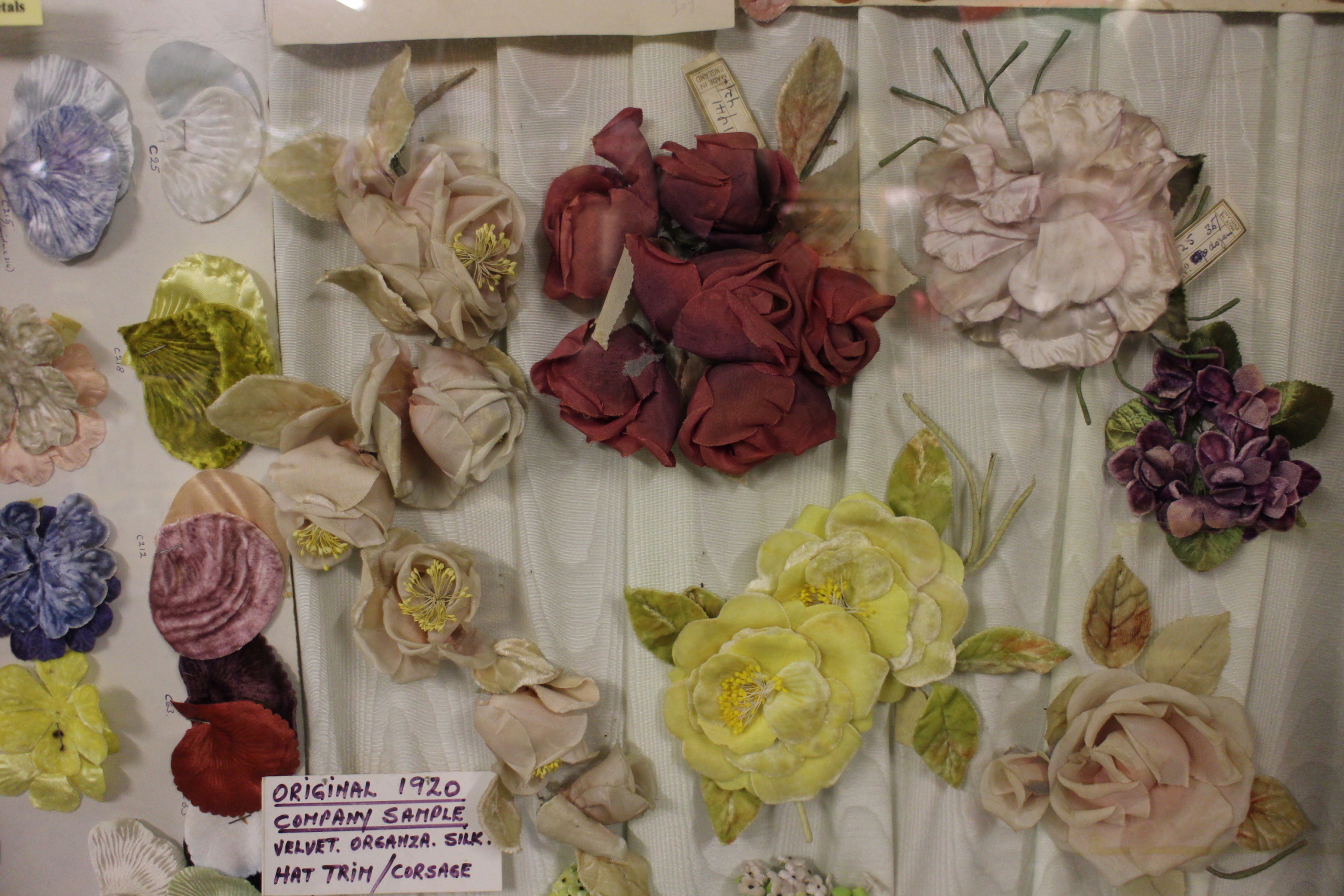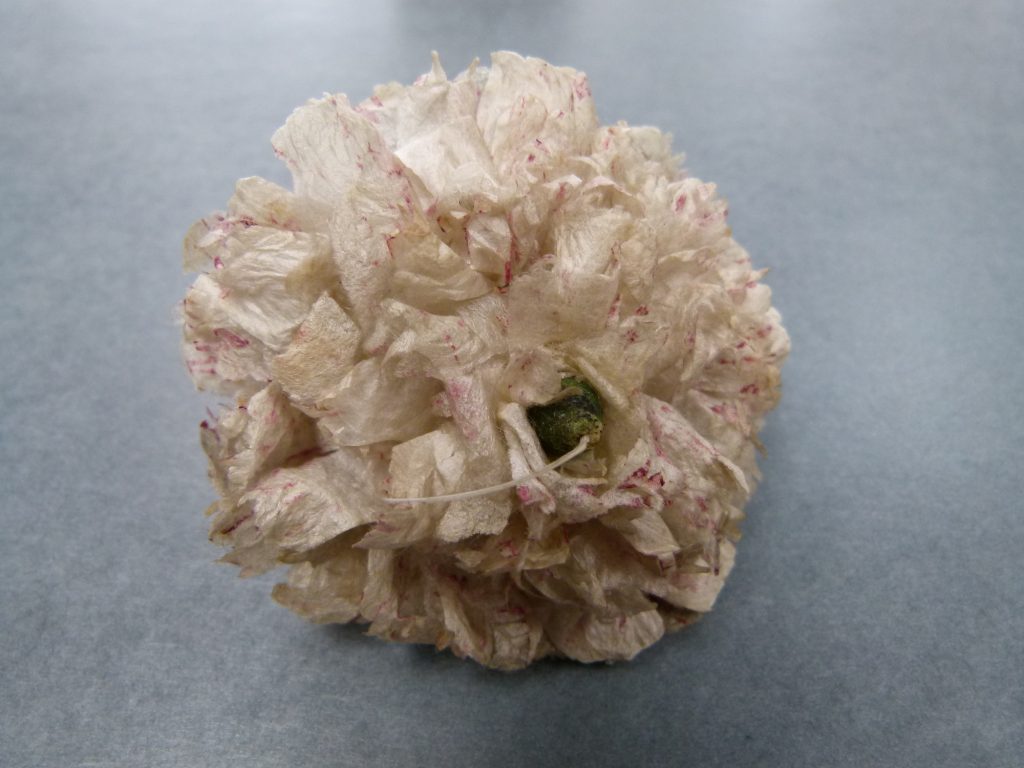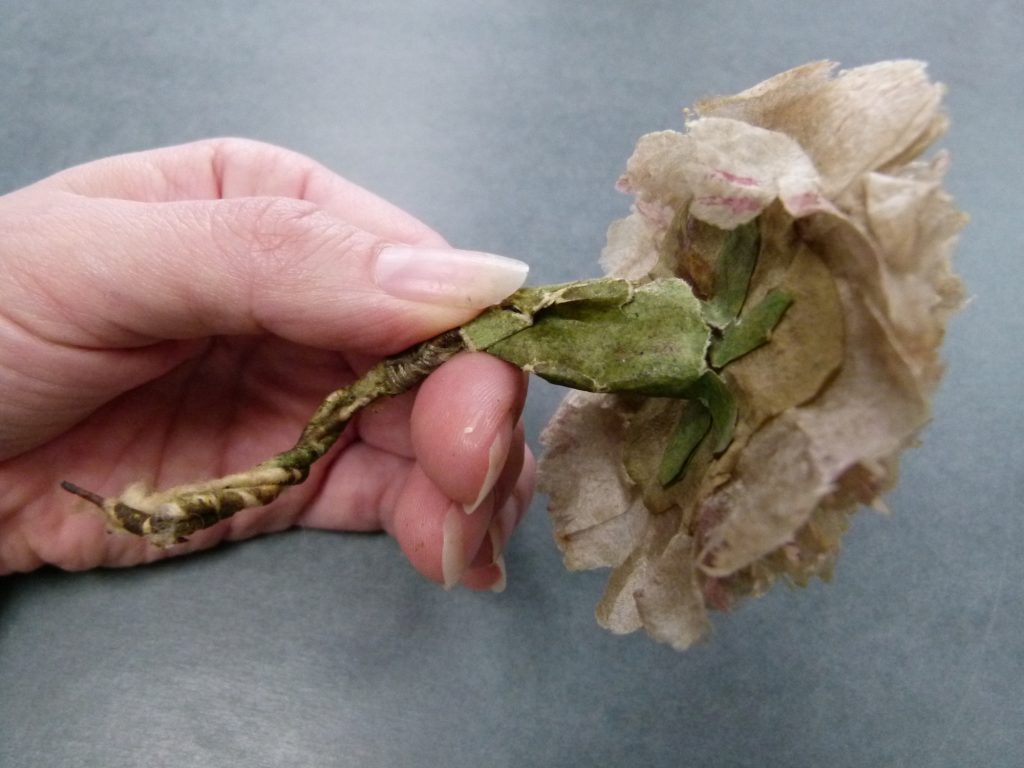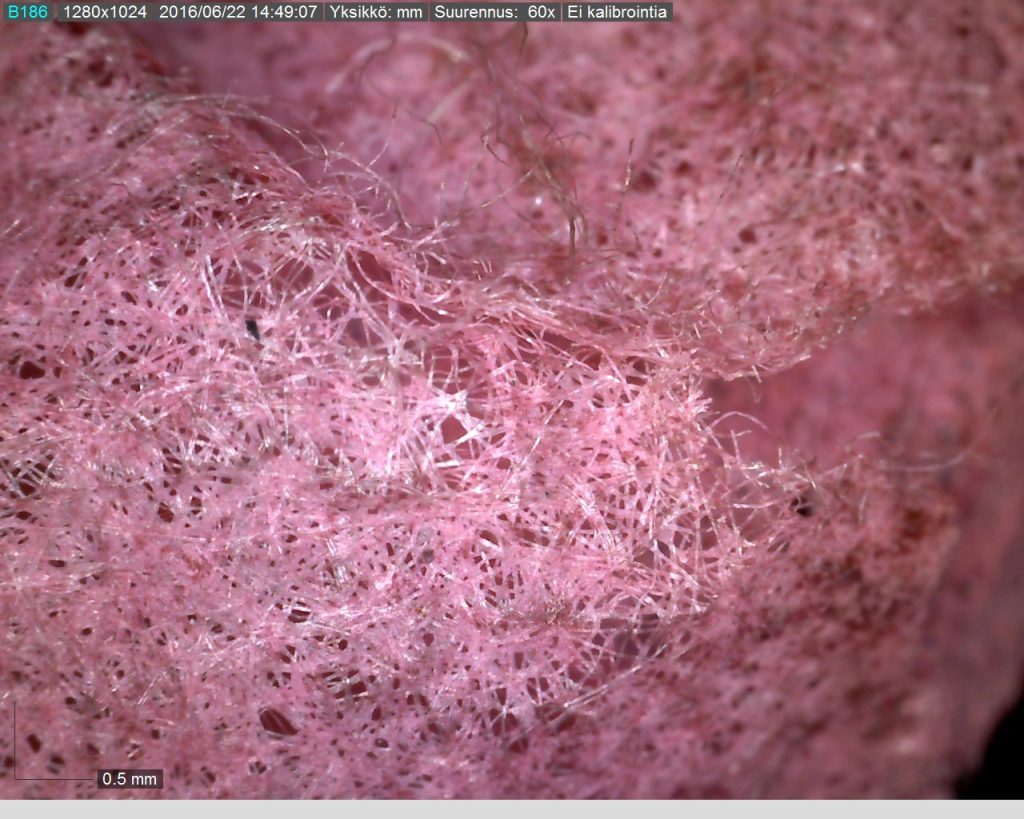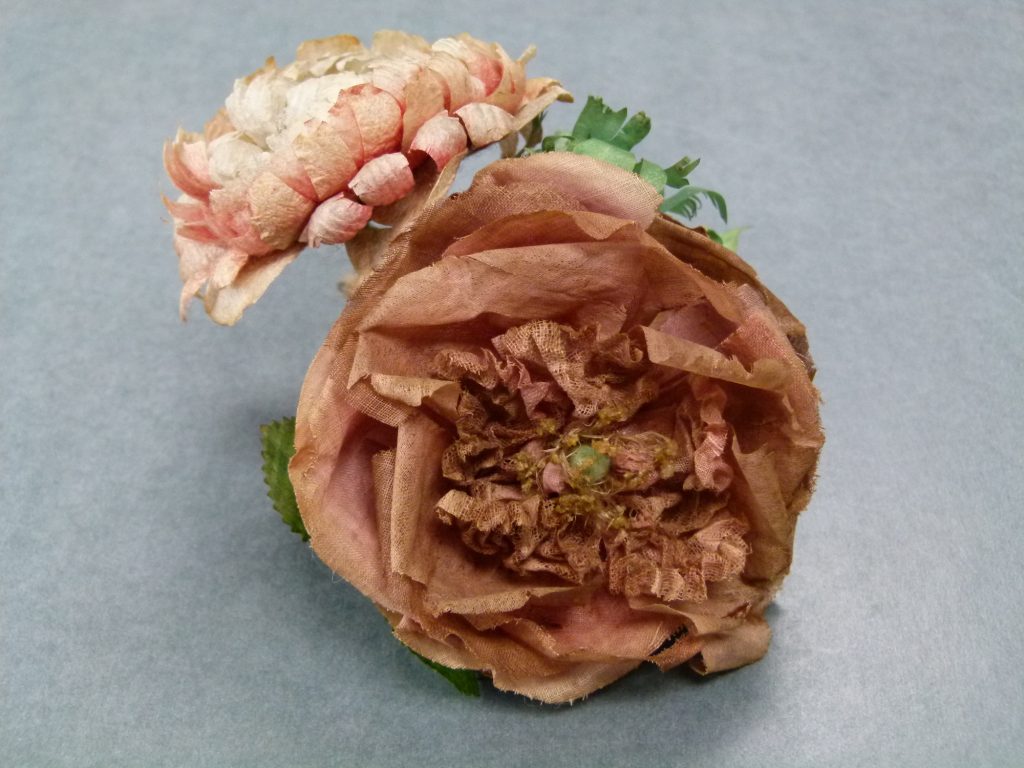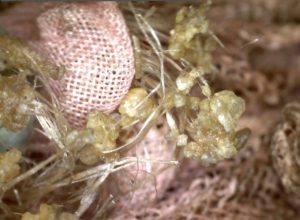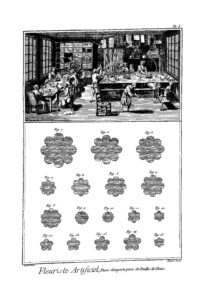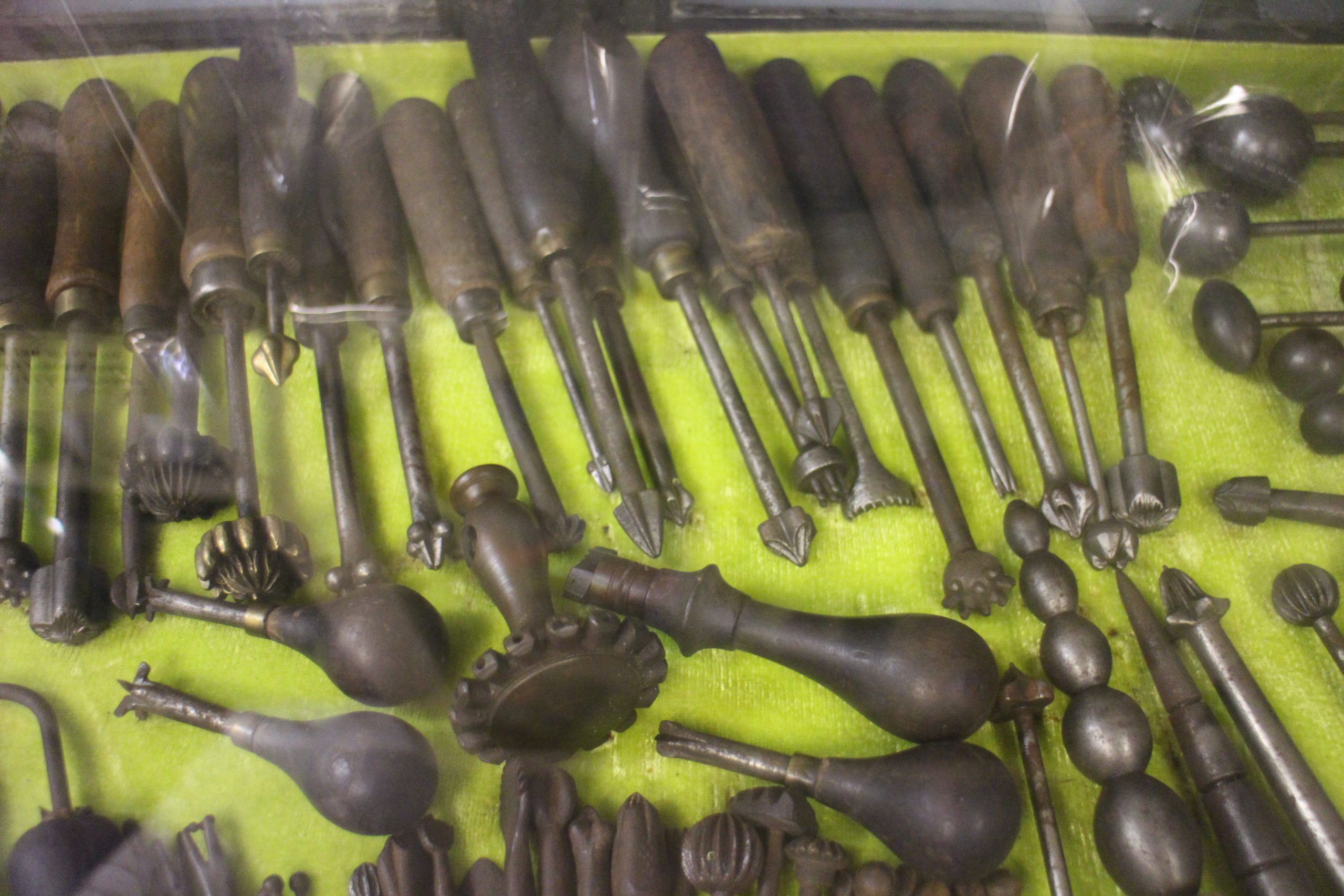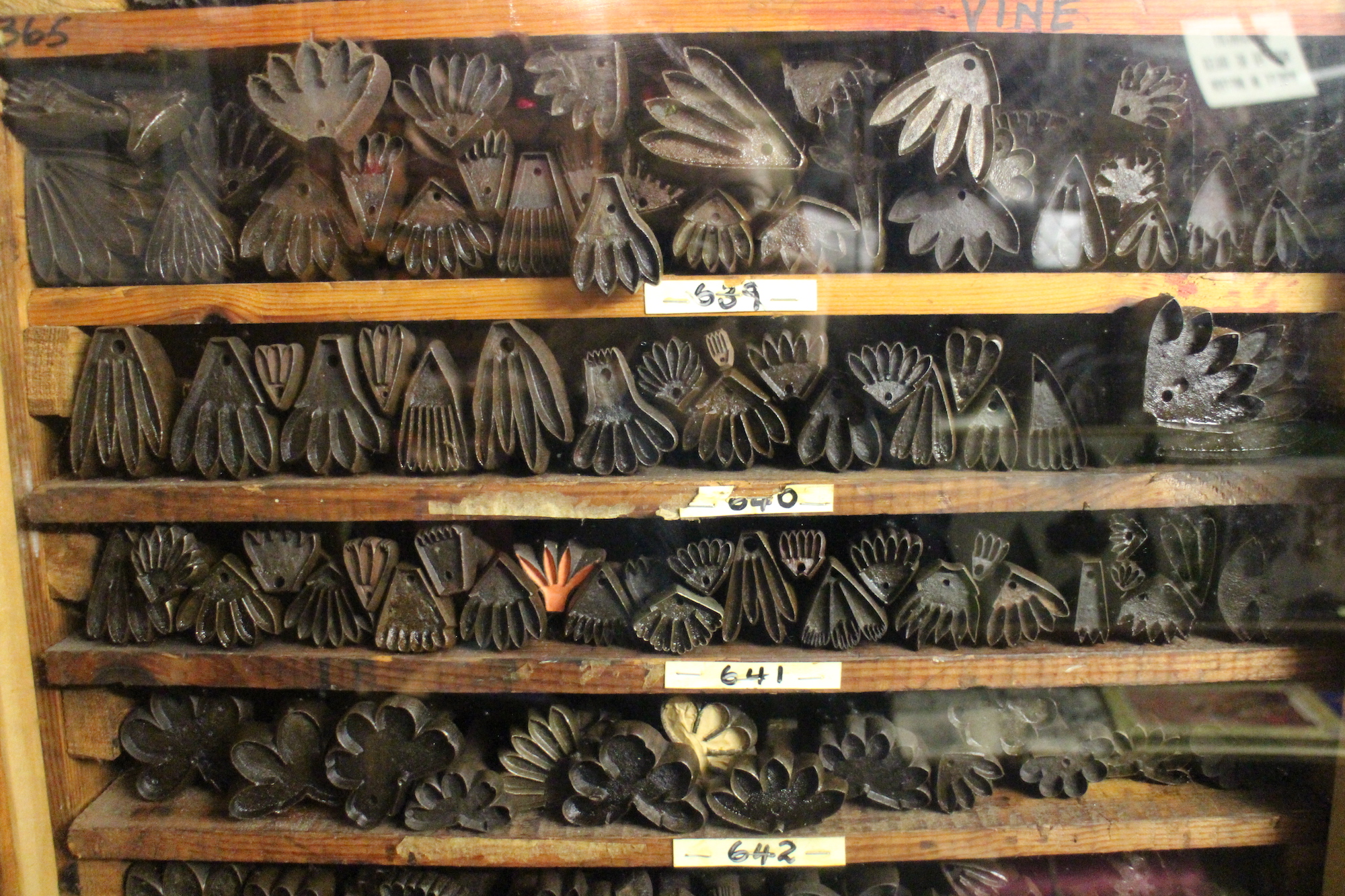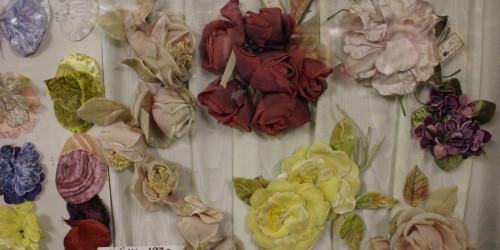
Here is Mira’s blog post on the conservation treatment of some 18th century artificial flowers. Team member Mira first came to the studio from Finland as our ICON-HLF intern in 2014-15. She has since joined us as a conservator and has recently been preoccupied with flowers……..
PART 1
Carnations and roses – artificial flowers from the 18th century
Four artificial flowers from the 18th century have brought a summer feeling to the studio when the weather outside has been absolutely miserable. Treating the flowers which have paper elements has been a great joy and given the possibility of learning about paper conservation from our own paper conservators Geoff and Minny. Textile conservators do come across artificial flowers in their work – as decorative elements for example on fashionable hats, bonnets and dresses. We recently conserved a wedding dress dating from 1898 with the original orange blossom wax flowers around the neckline missing; at the clients request vintage replacements were added.
Minimal conservation was carried out to stabilize the condition of the 18th century flowers. Before starting to treat them it was necessary to take a closer look to understand their construction – this involved careful examination and slow looking. Our understanding comes from finding out not only about materials and construction methods but also learning about the life circle and history of the objects. Conservation deals with the history of material culture and is very much object based research. One thing is for sure – one always wants to know more.
What are the flowers made of?
Two carnations – date probably from the 1720s
Petals: fine painted paper, petals are bound together using thin wire.
Stem: three iron wires twisted together, each first covered by raw cotton (?) and bound by strips of painted paper. Part of the stem is wrapped in thread, probably as a previous repair.
Receptacle with five sepals: green painted paper, glued in place.
Ovary: raw cotton (?)
Stigma: shaft of a feather.
Rose with a bud
Petals of the rose: cotton fabric.
Leaves: painted stamped paper.
Stem: thin twisted metal wire bound with silk thread.

Rose with another flower
Petals of the rose: cotton fabric, probably starched.
Seeds: photomicrograph shows that the seeds are made of natural looking gum material.
Stem: metal wire covered with linen (?) fibres and then covered with a strip of paper.
A glimpse into the flower making techniques and history
Diderot’s Encyclopédie, ou dictionnaire raisonné des sciences, des arts et des métiers (1751-72) contains a series of prints about the manufacturing of artificial flowers.
The prints give a glimpse into a flower making workshop where men, women and children are working using different kinds of tools. The prints also contain patterns for making petals and leaves, for example roses, pomegranates, wallflowers and carnations. The materials Diderot mentions are for example fabrics (toilé ou otre étoffe), parchment, iron wire and natural gum (gummé) to make the stamens and seeds of the flowers. The patterns for the flowers we have conserved could have originally been made in a workshop similar to that pictured in Diderot. Whether the petals of the carnation were cut using a cutting tool or simple scissors is hard to tell.
A quick look in Robert Campbell’s, The London Tradesman (1747), a manual for prospective apprentices seemed to prove that flower making was not yet an established business during that time in England. The London Tradesman: Being a Compendious View of All the Trades, Professions, Arts, Both Liberal and Mechanic, Now Practised in the Cities of London and Westminster. Calculated for the Information of Parents, and Instruction of Youth in Their Choice of Business, does not mention the trade of artificial flower making. It does contain lots of other fashion and clothing professions like button makers, hoop petticoat and fan makers but it seems that the profession of artificial flower making was still on its way.
To learn more about making artificial flowers I visited a fascinating flower making museum in the basement of Shirley Leaf & Petal Company in the town of Hastings. The business is over hundred years old and they still use original tools and machines to make flowers for their shop and also to commission for numerous theatre and film productions. Their vintage collection flowers are made of 1930’s velvet fabrics. The museum is packed full of flower making history with thousands of cutting and stamping tools, materials and sample boards. The museum has a showcase full of hand cutters which were used with mallets to cut the shape of petals and leaves.
The flower irons were heated over the fire and then realistic structures were embossed onto parts of the flowers. The tools with round metal head were used on a soft cushion to create the natural concave shape of the petals. Then after cutting, veining and shaping the petals they were bound together using wire to recreate the flower heads. The tools look more or less the same as the millinery flower making tools still used today and similar to those that must have been used in the 18th century.
PART 2
To follow soon…What you need to conserve artificial flowers?
